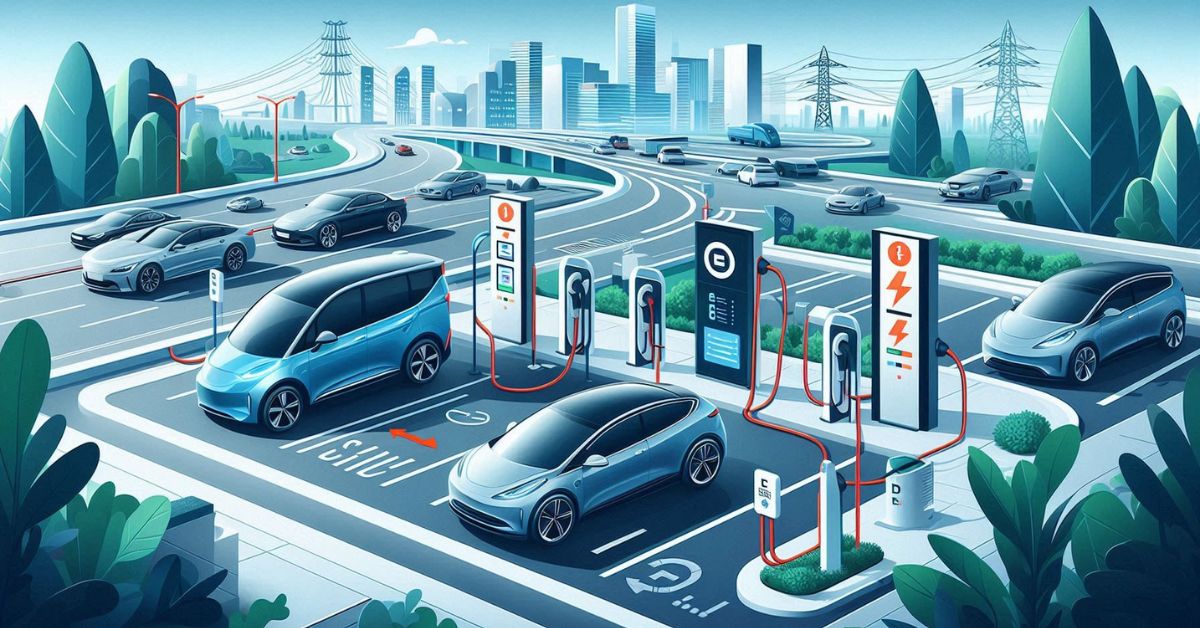The Shift to Sustainable Transport: Integrating Electric Vehicle Charging Stations
Electric vehicles promise a cleaner, more efficient means of travel. The quality and ubiquity of EV charging solutions are central to their success and uptake. Understanding the nuances of EV charging, from the technology fundamentals to the types of charging available, such as Level 1, Level 2, and DC Fast Charging, is crucial for consumers. Accessibility is at the heart of infrastructure planning, and as we address drivers’ range anxiety, the commitment to install stations strategically becomes increasingly essential. With companies continually perfecting the user experience, EV ownership becomes more than a mere possibility—it becomes a convenient reality.
The evolution of the charging infrastructure also includes consideration of charging times, payment methods, and station availability. These factors interplay to either simplify or complicate the consumer’s experience and as such, they demand careful attention. Furthermore, the support infrastructure must align with vehicle advancements, ensuring compatibility and forward compatibility with emerging EV technologies.
Critical Considerations for EV Charging Station Installation
Establishing a comprehensive EV charging network entails more than simply erecting charging points. It requires an in-depth analysis concerning location selection, ensuring proximity to power supplies, and accommodating a diverse range of EV models and charging requirements. Furthermore, as governments implement stricter regulatory guidelines to govern EV charging infrastructure, compliance becomes a prerequisite, not an option. These standards promote safety, reliability, and efficiency, all critical factors in the user’s charging experience.
Another crucial aspect is the installation’s aesthetic and practical integration into the urban landscape. Charging stations should be easily accessible and prominently placed without intruding on public spaces or disrupting existing urban design. Integrating these charging points seamlessly into the environment challenges city planners and developers alike, but it is a challenge that must be met to fuel the transition to electric transportation.
Advancements in EV Charging Technologies
Innovation is a constant within the sphere of EV charging technology. Recent developments promise a near future where wireless, inductive charging eliminates cables and plugs, offering a convenience akin to smartphone charging. Fast charging stations present a game-changing opportunity for longer journeys, significantly reducing the time required to ‘refuel’ an EV. This branch of technology is seen as vital in making EVs more palatable to the mass consumer who values time alongside convenience.
The onset of smart charging networks portrays a future where charging infrastructure actively communicates with the electrical grid. These systems can optimize power use and prevent strain during peak demand, exemplifying a smarter, more responsive power management system. Technological progress also harbors potential benefits such as vehicle-to-grid (V2G) systems, whereby EVs can return energy to the grid when not in use—a visionary glimpse into a sustainable give-and-take ecosystem.
Public and Private Collaboration in EV Charging Projects
The leap towards expansive EV charging infrastructure is not one government or businesses can accomplish in isolation—it is an endeavor that requires collaboration across industry sectors and between public and private entities. Governments can catalyze change through policy-making and infrastructure investment, while businesses can innovate and drive market growth. Equally, utility companies have a role to play as their grids become the backbone of this new transport model. By sharing resources, knowledge, and objectives, these partnerships can amplify the development and implementation of EV charging solutions.
Public outreach and education also form a cornerstone of this collaborative effort. Stakeholders can galvanize local momentum towards emission-reducing transportation options by engendering community understanding and support for EVs.
Charging Forward: The Global Landscape of EV Charging
With each passing year, the global push towards an electrified future is becoming more tangible. Some countries lead the way with aggressive infrastructure strategies and supportive policies that make EVs a practical choice for consumers. Others accelerate more slowly, yet the momentum is palpable. By understanding each country’s successes and challenges, it is possible to adapt and implement best practices worldwide.
Policy decisions, such as mandates for EV production and incentives for ownership, have the potential to sculpt the landscape of vehicle charging infrastructure on a global scale. This regulatory environment plays a crucial role in expanding and integrating EV technologies into everyday life, providing a framework within which progress can occur in a coordinated fashion.
The Role of Technology and Data in EV Charging Operations
As technology advances, so does the heart of EV charging operations—data. The Internet of Things (IoT) presents opportunities for charging station management by enabling devices to communicate and share data, improving efficiency and user experiences. This interconnectedness means that EV owners can enjoy real-time data on station availability, charging times, and even pricing. However, with such reliance on digital technologies, security and privacy concerns are paramount. Stringent safeguards must be in place to ensure user data is protected and charging networks remain resilient against cyber threats.
Overcoming Challenges in EV Charging Infrastructure
Challenges persist despite the groundswell of support for EVs and their associated charging infrastructure. Grid capacity and stability remain focal points as the electricity demand is likely to surge. Economic barriers must also be overcome, particularly in low-income areas where the benefits of EV ownership could be most impactful but are often the least accessible. Urban areas need help with spatial constraints, which require integrating charging stations into existing infrastructure complexes.
Innovative solutions and funding mechanisms are necessary to address these barriers. Careful urban planning, scalable technologies, and targeted investments can alleviate some of the most significant challenges, paving the way for a smooth transition to electric mobility.







